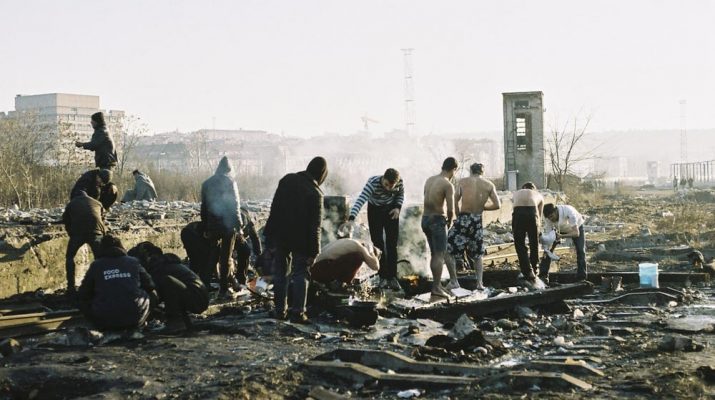Patches of ice dot a grassless yard where a group of refugees and migrants heat a barrel of water on a camp fire to bathe and hand wash their clothes on a dimming afternoon in early January.
A teenager from Pakistan sits on his haunches and shivers as he waits for his friend to pour a bowl of hot water down his back, wearing only a pair of undershorts.
Young men sit in tight rings around the camp fires. Smoke cylinders rise from the centre of each circle, the wind picking up, dragging the dark gray plumes against the air.
The other side of the street is lined with hotels, cafes and restaurants. Within eyeshot is a construction site for Belgrade Waterfront, a controversial real estate project that will place a high-rise tower and luxury apartments along the Danube River.
Fawad Wakili, an 18-year-old who fled Afghanistan’s Kabul four months back, is among the estimated 700 refugees and migrants sleeping in and around the abandoned buildings behind Belgrade’s central bus station.
As of November, the United Nations estimated that more than 6,000 refugees and migrants were in Serbia.
Fawad, a thin youngster who looks younger than his age, says he left after receiving threats from Taliban members. He has been here for more than two months, sleeping huddled up next to others in a corner in one of the several abandoned buildings located on the plot of land. Rolled up in dirty blankets, they keep warm by burning scrap wood and rubbish in bins inside the buildings.
Along with many of his fellow campers, Fawad is struggling to overcome a cold and a chest-rattling cough he developed amid a combination of wintry weather and excessive smoke inhalation. “It’s the third day I’m sick,” he says. “The problem is the weather is very cold and inside the buildings there are [camp] fires everywhere.”

